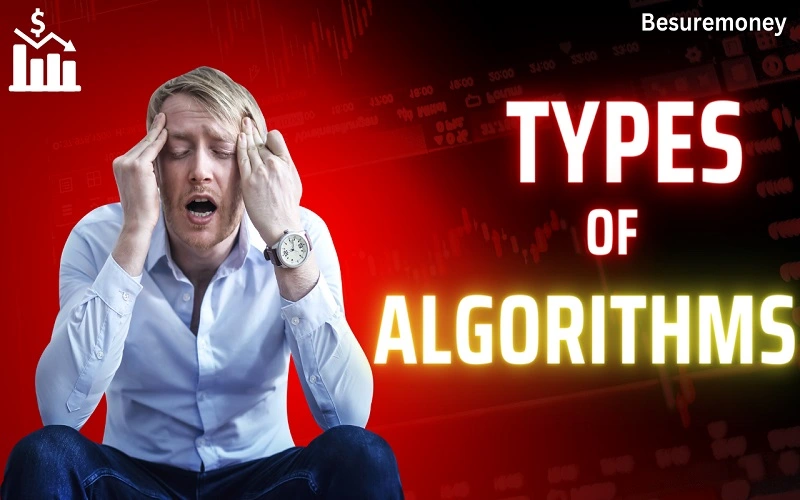The world of cryptocurrency trading has changed for the better in recent years. While most people assume there is a chance to gain profit from it by taking trades, there are algorithms called algo trading that do all the work.
Crypto algo trading means using computer algorithms to enter a trade automatically, and the markets are of cryptocurrencies. Algorithms that can analyze the market data and trade automatically in a predefined set of rules have stolen an enormous part of the market.
What is crypto algo trading?
Crypto algo trading uses computer algorithms to automate the process and execution of cryptocurrency trades. In other words, they are predetermined rules that guide you on when to take and how to execute your trade based on the market situation.
What are the terms of crypto algo trading?

To understand trading machine-learning crypto, you need to familiarize yourself with the following basic terms:
Algorithms:
It is a step-by-step procedure or formula for solving problems. In trading, these tools are employed in finding market trends and activating trades automatically.
Trading bots:
Trading bots for an individual is done by automated software programs using algorithms.
HFT (High-Frequency Trading):
HFT (High-Frequency Trading) is an intricate pre-programmed trading algorithm designed to process trades in microseconds, at very high volumes
Backtesting:
Testing a trading strategy using current and historic past historical data to see how it may optimize all live trades.
How does crypto algo trading work?

Crypto algo trading works by using advanced computer algorithms to perform trades according to a predetermined set of conditions. The nature of these algorithms is to chart the market data, assess trades where available, and perform those tradings without human help. These are the various constituents that form part of the process; we will dive deeper into how crypto algo trading works.
Basic principles:
Let us get down to the brass tax, when we talk about crypto algo trading – The fundamental is automation. Programmed set of rules to trade cryptocurrencies at an exchange. These rules can be regarding price changes, volume changes, market trends, and other technical indicators. Whenever criteria-matching trading signals are identified by the algorithm itself, it automatically carries out the trade in real time.
What are the types of algorithms?

Different types of algorithms in crypto trading:
Trend following algorithms:
These algorithms trade in the direction of market trends, wherever identified for example, if the market so is ordered to operate as follows: When the market goes up we have to buy and when it drops we will sell.
Arbitrage Algorithms:
These algorithms identify and trade off price differences across different exchanges and markets. In the simplest terms, if a bitcoin is priced at $5000 on one exchange and if we have found an opportunity to sell that same bitcoin for higher.
Market-making algorithms:
Market makers put bids and ask for orders at the same time, attempting to offer market liquidity to the market. Their profit then comes from the spread between buying and selling prices. This is a statistical parameter; if you use market-making algorithms, your exchange behaves like the one we have described.
Execution Strategies:
Crypto algo trading can make use of various execution strategies, depending on what exactly the trader wants to achieve through its trade in the market.
Scalping:
This tactic generally involves many small trades to profit from minuscule price movements. Algorithms can make these trades quickly, and we call this scalping trading area.
Momentum Trading:
This is a trading strategy where traders buy assets on an uptrend and sell those in a downtrend or short. Momentum algorithms analyze the strength and direction of these market trends.
Mean reversion:
The theory is that prices almost always return to their historical trend. These algorithms identify when prices have diverged far from their average price, and then execute trades to take advantage of the excepted mean reversion.
What are the benefits of crypto algo trading?
There are a lot of reasons why crypto algo trading is so advantageous and the reason they allure to trade both for beginners and traders. Algorithmic trading is superior to traditional manual trading due to automation, speed, and efficiency, Some of the major benefits of crypto algo trading include:
Efficiency:
Crypto algo trading is faster than human traders. Algorithms are capable of processing massive chunks of the market data without in turn enabling faster decision-making and quicker trade execution. Especially in the lightning-speed cryptocurrency market where prices can change on a dime, this kind of efficiency is essential. Trade automation can take advantage of opportunities much more promptly than any human trader ever could, and it ensures that traders are made at the best possible moment.
Emotion-free trading:
There are many ways your emotions can hinder trading decisions, and most of the time those decisions are destructive. Fear, greed, and other emotional responses can make a trader act irrationally, like selling when the market goes down or holding in losing positions for too long. Crypto algo trading as the state of being, without feelings in a robotic manner, follows only predefined rules and strategies. This emotionless trading style is key to staying disciplined and consistent so you can make more rational and more profitable trading decisions.
Reduced Transaction Costs:
Trading systems are also able to process orders more quickly than human traders, leading to faster order execution and trade confirmations. Algorithms can capitalize on market inefficiencies and place trades at the most favorable prices, meaning they can minimize slippage while lowering trading costs. Moreover, the light speed and precision of algo trading can result in better order executions as well which improves cost savings.
Diversification:
Using crypto algo trading, traders can spread their profit-generating strategies and multiple coins simultaneously. With risk distributed across multiple algorithms and trading strategies, traders have less exposure to any one market condition or asset. This diversification is key to a more diversified, resilient trading portfolio that will transition through different market conditions.
What are the risks and challenges of crypto algo trading?
At the same time, algorithmic trading of cryptocurrencies has several benefits as well as disadvantages and difficulties. Appreciation of these shortcomings is vital for traders considering the use of algorithmic strategies in the high-velocity space that is cryptocurrency.
Market Volatility:
Prices in the notoriously volatile world of cryptocurrency often make extreme moves over short timeframes. So, the same price movements can be used by algorithms to take advantage of this volatility at lightning speed but on the other hand, you become exposed to these unpredictable market swings. Poorly implemented algorithms for very high volatility may result in losses.
Technical issues:
One of the biggest risks in crypto algo trading is technical issues. Software bugs, connectivity issues, and hardware failures can interfere with trade orders, resulting in missed opportunities or erroneous trades.
Overfitting:
Overfitting is a common challenge in algorithmic trading, where an algorithm is optimized to achieve great back-test results but performs well once introduced to the market live. Because overfitted algorithms are not flexible enough to be adjusted according to the market
conditions unanticipated losses could appear. Plenty of traders try to avoid overfitting by keeping their models simple, but using complex validation strategies can be even more effective in ensuring that your backtest performance reflects the efficiency of your trading strategy rather than patterns in past data.
Security risks:
With algo trading with crypto on live data, you are sure to play around or deal with sensitive and confidential information as your module directly accesses your exchange API set of keys. This exposes traders to security such as hacking and unauthorized access. In such conditions, secured trading systems with a strong authentication mechanism that is kept up to date are the key tools against fraudulent hack attempts.
Conclusion:
The use of algorithms to buy and sell cryptocurrency removes the person from the choice person on a market 24/7 enforcement. Schedule around-the-clock is used in trading as an efficient way to improve their operations by implementing Crypto algorithmic trading. But, it has its cons including market fluctuations, technical problems, and regulatory obstacles. However, following resources to educate yourself, be careful about the trading platform you choose, and altogether methodically building/ testing your algorithms help you navigate through all these challenges mentioned above quite effectively. Algo trading might be the future of all your time and could make you trade effortlessly, but always trade responsibly because cryptocurrency markets change every second.
FAQs:
Q1. Is Algo crypto trading profitable?
Ans: Factors that affect the profitability of algorithmic trading are: data analysis: the effectiveness and success of an algorithm lie in encrypted data. The collection of accurate data and the processing of real-time market information are key ingredients in developing a successful trading strategy.
Q2. Can algo trading make money?
Ans: Well, the reality is: Yes you can make money with algo trading. An algorithm-driven approach to trading makes it more systematic, and disciplined and helps in identifying as well as executing trades in a much faster way than even an experienced human trader would do.
Q3. Is algo trading banned?
Ans: No SEBI, (securities and Exchange Board of India) is not planning to ban algo trading soon.
Q4. Is algo trading the future?
Ans: Yes, algo trading is widely regarded as the future of trading.
